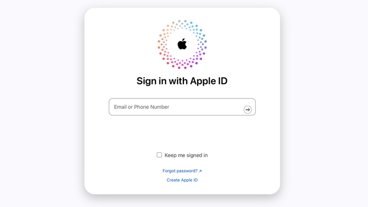Apple filing places iPhone networks at restaurants, zoos, concerts
The concept calls for a short-range wireless network comprised of a central server and one or more wireless routers, such as AirPort Extreme WiFi base stations, that merchants or attraction organizers could install within their venues. Included on the central server would be a proprietary software-based application (or "iPhone server") capable of interfacing and serving up customized information and applications to Apple media devices devices that come within range of the network.
"For example, assuming the establishment is a restaurant, local server may provide a menu to media device," the company said. "A user may choose contents in the menu for an order by interfacing with device 1020 and submit the order to local server when complete. Local server may then process that order upon receipt."
In some cases, software on the server could interact with software on a user's media device, such as an iPhone or iPod touch, to allow the menu to be customized for a that user. For example, the personal media device may have stored user preference profiles for desired foods. If it is known that user of device has a dietary restriction (such as diabetes) or prefers to eat vegan food (Steve Jobs), the menu could be customized such that only the food the user is permitted to eat or prefers to eat is provided on the menu.
"The user preference profile may be uploaded to the merchant server, which may generate a custom menu to be provided to the personal media device," Apple said. "In another approach, the entire menu may be provided to the media device, but the media device may filter out content based on the user preference profiles to provide a custom menu."
Such a customize menu system could be extended even further, according to the filing, in that a food rewards systems may be implemented to reward a user with the option to eat normally restricted food (such as dessert) if it is determined that the user has earned the reward. Similar, the software on the user's media devices may be able to monitor a person's health (by measuring the number of steps the person has taken or by monitoring a person's pulse).
"This health information may be collected over the course of a day, week, or other predetermined period of time," Apple said. "Depending on the level of physical activity and monitored health, the personal media device may provide the user with a reward. This reward may be 'cashed in' when a menu is customized to include food that would not otherwise be included."
In another example provided as part of the patent filing, the short-range wireless system may be referred to as a distributed network such as citywide public network or a merchant-wide network. In this example, a system could include many wireless routers that may be connected the central server.
Each wireless router would have its own local area network, thus any device located within a particular wireless router's local network may be able to communicate with server. One advantage of this kind of system is that the geographic location of each wireless router may be known and the local area networks of two or more routers may intentionally be laid out to overlap one another. This overlay, Apple explains, could be advantageous because it may provide more precise detection of a media device's geographic location (e.g., three wireless routers may be used to triangulate the position of a media device in communication with three routers). Such geographic knowledge could then be used to execute various location-specific features.
"For example, in one embodiment, as a media device moves from one router's local network to another, media device may automatically download content specific to a particular router For example, if server detects the geographic location of media device to be in the geographic region of router, server may instruct media device to play content local to router. In another approach, assuming that media device has already downloaded all or a portion of the content included on server, when media device establishes communication with router (e.g., by moving into its local area network), server may issue a command to media device to play localized content specific to router. Thus, specific content may be played based on a detected geographic location of a media device. That is, even though the aggregate of routers may form a larger distributed network, specific content may be provided or cause to be played based on a detected geographic location of media device within that larger distributed network."
In some cases, Apple says a docking station and wired network may be substituted for a wireless one, which would provide its own set of advantages. Referring back to its restaurant example, the electronics maker said each dinner table could include a docking station, and as such the location of that docking station is known.
"Thus, when a user places an order on a particular docking station with his or her media device, the merchant may know which table placed the order. In other embodiments, depending on the location of a particular docking station, server may provide different information," the company said. "For example, if a user is at a tourist attraction such as a zoo, server may provide primate information to a docking station located in the primate section of the zoo and may provide lizard information to docking station located in the lizard section. In yet another embodiment, a user may connect to docking station to download all localized-content onto media device, thereby giving a user the option to access the content when desired. For example, a user may download all localized-content for a tourist attraction (e.g., a museum). When the user moves from one area of the tourist attraction to another, the user may select content appropriate for the area her or she is in. For example, if the user is in the impressionist section of the Metropolitan Museum of Art, the user may select an audio file on impressionist art."
In the 8-page patent filing, authored back in November of 2006 — just prior to the iPhone's unveiling — Apple rattled off at least six other potential implementations of its short-ranged wireless system:
- "Various location-based content that may be provided in connection with a merchant that sells goods and articles of manufacture. For example, a user may access music (e.g., being freely broadcast by the establishment or for sale on content source), advertisements (e.g., coupon specials, video advertisements, and audio advertisements), event calendar (e.g., to learn of exciting new events that may be occurring at the merchant), virtual card information may be exchanged, podcast, general information on merchant (e.g., return policies), product information (e.g., graphics of products, reviews of products, etc.), or any other suitable information pertinent to the merchant."
- "Various location-based content that may be provided in connection with a merchant that sells food (e.g., a restaurant). For example, such a merchant may provide music (e.g., for purchase or for free listening), a menu (e.g., from which a user may place orders for foodstuffs), event schedule, general information on the merchant, reviews (e.g., Zagat survey), and any other suitable information pertinent to the merchant."
- "Various location-based content that may be provided in connection with a concert or other music venue. A concert or music venue may provide content including, for example, music, setlists, virtual cards, website information, schedule information (e.g., for upcoming shows at the venue), graphics (e.g., album art, pictures of the band members, etc.), ticket sales (e.g., provide user option to purchase tickets in advance), general information relating to the concert, or any other information."
- "Various location-based content that may be provided in connection with a theater or movie. For example, local content may include music, soundtracks (e.g., for purchase from a content source), movies (e.g., for purchase from content source), podcast (e.g., audio commentary relating to the movie such as director's commentary), showtime schedule, advertisements, ticket purchasing, real-time translation (e.g., if a foreign file or an opera in a foreign language), graphics, or any other suitable information."
- "Various location-based content that may be provided in connection with a tourist attraction (e.g., a museum or zoo). Local content may include, for example, audio podcasts, maps, event schedule, advertisements, general information, graphics (e.g., animal pictures), and any other suitable information. Because tourist attractions can be relatively large (e.g., Disney World) and children often frequent such places, parents may be concerned of a child's whereabouts if not directly within their sight. Assuming the parent and child both have a media device, and the tourist attraction or other large area (e.g., city) has a distributed network, a location program may be executed to determine the location of the child's media device."
- "Various location-based content that may be provided in connection with a transportation hub (e.g., an airport, bus station, or train station). Localized content may include, for example, schedules, maps, weather, city information, or any other suitable content. FIG. 15G indicates various location-based content that may be provided in connection with a merchant that sells groceries. Localized content may include, for example, advertisements (e.g., weekly flyer), shopping lists, suggested foods (e.g., to adhere to a preferred eating lifestyle such as vegetarian), recipes, music, and any other suitable content."
The filing, which was botched during publication by the United States Patent and Trademark Office and is therefore missing its associated illustrations, is credited to Apple employee Michael Rosenblatt.
 Slash Lane
Slash Lane










 Mike Wuerthele
Mike Wuerthele

 Malcolm Owen
Malcolm Owen
 Chip Loder
Chip Loder

 William Gallagher
William Gallagher
 Christine McKee
Christine McKee
 Michael Stroup
Michael Stroup






